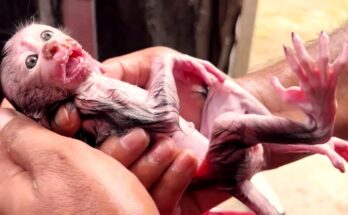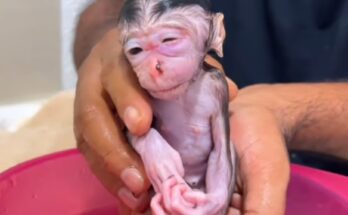In the heart of the African savanna, a female baboon welcomed a new life into her troop. After a nearly six-month gestation period, she gave birth to a tiny, pink-faced infant, instantly becoming the center of attention among the group. The newborn clung tightly to its mother’s belly, instinctively seeking warmth and protection.
Baboon births are significant events within the troop. Unlike many animals that give birth in solitude, baboons remain within their social groups, allowing other members to observe and even offer assistance. The dominant male of the troop often stays nearby, ensuring the mother and infant remain safe from predators or rival baboons.
The mother, an experienced member of the troop, immediately began grooming her baby, reinforcing their bond. Grooming is not only a way to keep clean but also a crucial social behavior among baboons. Other females, particularly those related to the mother, showed interest in the newborn, reaching out to touch or groom it. This socialization helps the infant integrate into the group from an early age.
For the first few weeks, the baby baboon will remain closely attached to its mother, relying on her for food and protection. Over time, it will begin to explore its surroundings, interact with other juveniles, and learn essential survival skills such as foraging and climbing.
As the days pass, the young baboon will grow stronger and more independent, but its bond with its mother will remain strong. In the complex world of baboon society, the birth of a new member is a moment of joy and renewal, ensuring the continued strength of the troop for generations to come.


